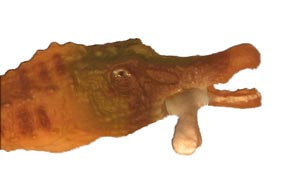New CollectA Ichthyovenator Dinosaur Model Reviewed
A Review of the CollectA Ichthyovenator Dinosaur Model
Over the last decade or so, palaeontologists have begun to realise that the spinosaurs were a very geographically widespread group of theropod dinosaurs. Fossils have been found in South America, Africa, Europe and there has even been fragmentary remains assigned to spinosaurids found in Australia.
To learn more about the evidence for spinosaurs in Australia: Evidence for Spinosaurs in Australia.
When the fossils of Ichthyovenator were discovered by a French led, scientific expedition to the Savannakhet Basin of south, central Laos in 2010, they represented the first definitive spinosaurid fossil material to have been found in the whole of Asia.
CollectA Ichthyovenator Dinosaur Model
Ichthyovenator is known from an individual specimen, all the fossil bones assigned to this new genus of carnivorous dinosaur were found in a single stone block, about two metres square. The fossils consist of two dorsal vertebrae (backbones), five partially articulated sacral vertebrae (back-bones over the hips), two tail bones, elements from the hips themselves and a single rib.
No skull material was found so CollectA have modelled the head of ichthyovenator on better known spinosaurs such as Suchomimus. The head on the dinosaur model is typical for a spinosaur, the snout is long and narrow and there is a distinctive hook in the front portion of the upper jaw.
Asian Spinosaurid
As well as being the first definitive spinosaur from Asia, Ichthyovenator is the first to be described that had two sail-like structures running along its back. The two dorsal vertebrae, numbers 12 and 13 are adjacent to hip area, dorsal vertebrae 12 is tall and fan shaped, it is believed to have supported a sail that ran from just before the hips down to the shoulder. The first sacral vertebra is less than 50% of the size of dorsal vertebra number 13, it is very much reduced, so it could not have supported a sail-like structure, the sacral vertebrae posterior to it are much larger and the sacral vertebrae numbers 3 and 4 are fan shaped just like dorsal vertebra number 12. This suggests that a second “sail” ran from over the hips down to the base of the tail.
The CollectA Ichthyovenator Dinosaur Model
Picture credit: Everything Dinosaur
Reviewing the CollectA Model
In essence, based on the fossil evidence, Ichthyovenator seems to have U-shaped notch in the middle of its back. The model shows these bizarre sails in fine detail. The sails have been tipped with large scales and there is a row of spines running parallel to the sails on each side of the model. There are also prominent projections on the thigh. These projections, in combination with the triangular spines on the tail give this dinosaur a very crocodile-like appearance.
The model measures a fraction under eighteen centimetres in length. No one knows for sure how big Ichthyovenator (I. laosensis) was but it has been estimated to have been between seven and a half and nine metres in length. This makes this model to be around the 1:42 to 1:50 scale size. Ichthyovenator could have weighed as much as two and half tonnes.
CollectA have decided to put their Ichthyovenator model onto a base. This gives the model stability, allows the feet to be moulded in proportion to the rest of the dinosaur’s body and in this case, it gives a hint at where the animal might have lived. The feet are sunk into the base, to give the impression of the dinosaur standing on soft mud, the base even has claw marks and a fragment of a leaf. It is thought that Ichthyovenator hunted for fish on the banks of large rivers that criss-crossed Laos in the Early Cretaceous.
Ichthyovenator even has a small fish in its mouth, to reinforce the idea of this dinosaur being closely related to other fish-eating dinosaurs such as Suchomimus and Baryonyx. It is appropriate for the CollectA dinosaur model to show this, after all, the name of this dinosaur translates as “Fish Hunter from Laos”.
A Close up Showing the Fish in the Mouth of Ichthyovenator
Picture credit: Everything Dinosaur
To view Everything Dinosaur’s range of CollectA dinosaur models: CollectA Prehistoric Life/Prehistoric World Models.
This is a beautifully crafted, hand-painted replica of Ichthyovenator, a dinosaur that was only named and scientifically described two years ago. It is an exciting addition to the CollectA range of dinosaur models.



